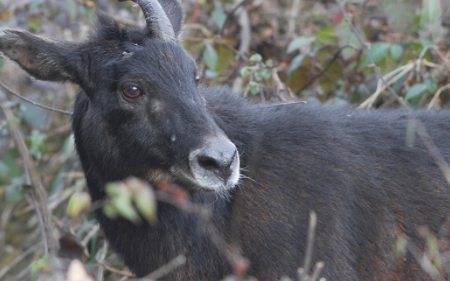Goaltide Daily Current Affairs 2020
Current Affair 1:
Share of Institutional Birth increased in most of the states
Recently, the key findings of the first phase of the National Family Health Survey-5 (NFHS-5) covering 17 states and 5 union territories were released.
A separate section on delivery care is part of these findings where information pertaining to the type of birth like a cesarean section, dependence on public and private health facilities, and presence of skilled health personnel for delivery are provided for each of the 22 states/UTs parts of the first phase of the survey.
In this story, we look at the data related to these indicators and compare it with NFHS-4.
|
Appropriate delivery care is essential for maternal health and perinatal health. Delivery care has a considerable influence on various health indicators like maternal mortality and infant mortality under the UN Sustainable Goal 3: ‘Ensure healthy lives and promote wellbeing for all at all ages.’ |
If we look at institutional births: Institutional births were comparatively lower in northeastern states

Urban-Rural divide observed in the share of Institutional births across States
- From the data provided in NFHS-5, it is observed that the percentage of institutional births in urban parts of Mizoram was 98.8% whereas in the rural areas it was 72.5% which is among the lowest.
- Meanwhile, in Nagaland, the only state with less than 80% institutional births, the share of such births in urban areas is 65% compared to just 38.8% in rural areas.
- Kerala, Goa, Lakshadweep, Sikkim, and Dadra & Nager Haveli were the only places where the share of institutional births in rural areas was higher than in urban.

Share of institutional birth in public facilities increased except few states except: Andaman and Nicobar Islands, Kerala, Goa, and Sikkim

One more thing that was observed was: Proportion of births in public facilities is higher in rural areas in most states. In 16 of the states/UTs part of the first phase, the proportion of institutional births in public health facilities is higher in rural areas than in urban areas.
Births by C sections is on a rise
Not only are institutional births rising, but the percentage of births by Caesarean Section (C- Section) is also increasing. C- sections are typically performed if there are complications from pregnancy which puts the health of the mother or child at risk since it is major surgery. According to WHO, 10% to 15% is the ideal cesarean rate. If the percentage of births by C-Section is below 10%, it is considered to be underused and if the same is above 15%, it means that the procedure is being overused. Only Mizoram’s rate of births by C-Section falls in this ideal category.
Current Affair 2:
U.S. imposes CAATSA sanctions on Turkey over S-400 purchase
The Countering America’s Adversaries Through Sanctions Act (CAATSA) is a U.S. federal law that imposes economic sanctions on Iran, Russia and North Korea. The bill came into effect on August 2, 2017, with the intention of countering perceived aggressions against the U.S. government by foreign powers. It accomplishes this goal by preventing U.S. companies from doing business with sanctioned entities.

CAATSA and India
- In the aftermath of 2016 presidential elections, U.S. had announced sanctions against Russia under the stringent law for its alleged meddling in the American presidential election.
- CAATSA, which came into effect in January, mandates the US administration to punish entities engaging in significant transaction with the defence or intelligence establishment of Russia.
- In 2018 the Trump administration has publicly expressed its desire to protect India from CAATSA in the backdrop of India’s S-400 deal with Russia.
- However, since then the US position has changed.
Current Affair 3:
Human Development Index 2020
The India ranked 131 among 189 countries in 2019 compared with 129 in the previous year, according to the 2020 Human Development Report published by the United Nations Development Programme.
A composite index measuring average achievement in three basic dimensions of human development—a long and healthy life, knowledge and a decent standard of living.


Norway topped the index, followed by Ireland and Switzerland.
India’s performance in brief:
- On country-wise groupings by development indicators, India was classified in the bottom third for most parameters, including quality of health and education and an adverse sex ratio, the report said.
- It was also ranked in the bottom third for a high percentage of vulnerable employees — employed people engaged as contributing family workers and own-account workers.
- The nation, however, ranked in the top third for low unemployment rate and high number of seats held by women in local governance.
- It also ranked among the top third for most socioeconomic empowerment indicators such as the female share of STEM (science, technology, engineering, and mathematics) graduates, holding financial accounts, and with mandatory paid maternity leave.
- On reproductive health and family planning and on carbon dioxide emissions, India’s performance remained mixed.

Current Affair 4:
12th GRIHA Summit
Recently, the inaugural session of the 12th Green Rating for Integrated Habitat Assessment (GRIHA) Summit was organised virtually.
Understand GRIHA in brief:
The rapid increase in Indian population and growth of Gross Domestic Product (GDP) has given rise to an enormous demand for buildings with a subsequent pressure on availability of resources. Another key challenge for the built-environment of Indian cities is the diminishing availability of water for urban areas.
In view of the above, and with an overall objective to reduce resource consumption, reduce greenhouse gas emissions and enhance the use of renewable and recycled resources by the building sector, TERI has played a crucial role in convergence of various initiatives, essential for effective implementation and mainstreaming of sustainable habitats in India.
With over two decades of experience on green and energy efficient buildings, TERI has developed GRIHA (Green Rating for Integrated Habitat Assessment), which was adopted as the national rating system for green buildings by the Government of India in 2007.

GRIHA is a rating tool that helps people assesses the performance of their building against certain nationally acceptable benchmarks.
- It evaluates the environmental performance of a building holistically over its entire life cycle, thereby providing a definitive standard for what constitutes a ‘green building’.
- The rating system, based on accepted energy and environmental principles, will seek to strike a balance between the established practices and emerging concepts, both national and international.
Other Related Initiatives:
- Global Housing Technology Challenge (GHTC)
Organised by: The Ministry of Housing and Urban Affairs.
Launched: January 2019
Aim: To identify and mainstream best available and proven construction technologies that are sustainable, green and disaster-resilient to enable a paradigm shift in housing construction.
- Affordable Sustainable Housing Accelerators (ASHA)
Under this initiative five Incubation Centers have been set up for identifying innovative materials, processes and technology for resource-efficient, resilient and sustainable construction.
- Smart Cities Mission
It is an innovative initiative under the Ministry of Housing and Urban Affairs, Government of India to drive economic growth and improve the quality of life of people by enabling local development and harnessing technology as a means to create smart outcomes for citizens.
It is working towards integrated and comprehensive development of cities.
Current Affair 5:
Himalayan Serow
A Himalayan serow has been sighted for the first time in the Himalayan cold desert region (Spiti, Himachal Pradesh).
First look at the image of this species.

Now, if question comes, whether is a butterfly, or any aquatic animal, you can easily eliminate.
For such new species, very few things you need to know.
Where it was spotted?
A Himalayan serow has been sighted for the first time in the Himalayan cold desert region. The animal was spotted by locals and wildlife officials at a riverside rocky wall near Hurling village in Spiti, Himachal Pradesh, on Friday (December 11). It was again sighted in the area on Sunday (December 13).
Then we will see characteristics,
A biologist has described a Himalayan serow as resembling a cross between a goat, a donkey, a cow, and a pig. It’s a medium-sized mammal with a large head, thick neck, short limbs, long, mule-like ears, and a coat of dark hair.
Himalayan serows are herbivores, and are typically found at altitudes between 2,000 metres and 4,000 metres (6,500 to 13,000 feet). They are known to be found in eastern, central, and western Himalayas, but not in the Trans Himalayan region.
Is the serow a threatened or endangered species?
According to the International Union for Conservation of Nature (IUCN), Himalayan serows have experienced significant declines in population size, range size and habitat in the last decade, and this is expected to continue due to intensive human impact.
Previously assessed as ‘near threatened’, the Himalayan serow is now been categorized as ‘vulnerable’ in the IUCN Red List of Threatened Species.
It is listed under Schedule I of The Wildlife Protection Act, 1972, which provides absolute protection.
<< Previous Next >>


